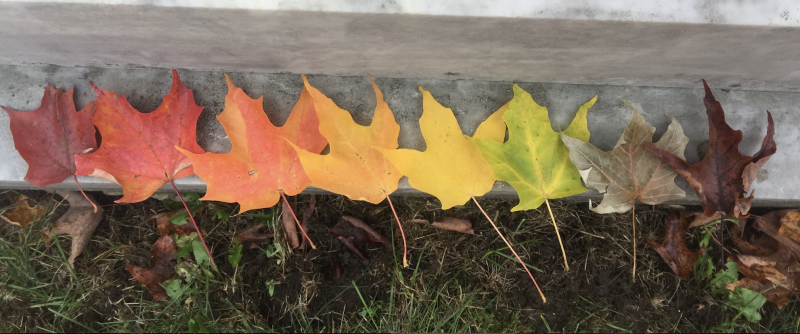
Tree Sign Language: Early Fall Color
Deciduous trees, ice-cream stands, and marinas close each fall for the same reason: as daylight dwindles and cold creeps in, they become less profitable. When income dips down to equal the cost of doing business, a wise proprietor will turn out the lights and lock the doors until spring.
Some enterprising holdouts stay open longer. Perhaps they have less competition, or a better location. Conversely, a few close shop at the first whiff of autumn. Those are the ventures which just scrape by at the height of summer. I’m talking about trees here, of course. Trees whose leaves show color ahead of their same-species peers are doing so because they are barely breaking even.
The solar-powered sugar factories we call trees are prudent savers and meticulous accountants. As a rule they don’t live beyond their means. In addition to sunlight, they need carbon dioxide, enough water and nutrients, and their roots need to breathe.
Each spring, a deciduous tree withdraws money from the bank – starches out of trunk and root tissue – and invests in a solar array, known as leaves. After replenishing its starch-bank for the cost of making leaves, tree expenses include respiration, and as-needed maintenance like the synthesis of antimicrobial compounds in response to injury. Income is sugars; savings account, starches.
As summer wanes, longer nights drive up costs (respiration), while shorter days bring down income, eventually forcing hardwood trees close for the season. However, if a tree’s root zone is compacted, root respiration is hindered, and they are less able to do their job. As a result, that tree’s sugar factory will be less efficient compared to others of its ilk, and less profitable overall. Poorly drained soils, deicing salt exposure, and mechanical damage also compromise root function.
Landscape trees experience high soil temperatures, restricted root zones, and intense competition from grass. Waterfront trees have other challenges: fluctuating water levels tax root systems, and those soils tend to be nutrient-poor. Stressed trees reach the break-even point earlier than robust ones, and they will color first. This is why you often see the first leaf color on the edge of a pond or lake.
Early color is a reliable sign of tree stress, but palette gives information as well. Orange (carotenes) and yellow (xanthophylls) are already within the leaves, masked by green chlorophyll. Trees make a waxy compound in autumn to block water and nutrients to their leaves, equivalent to winterizing a camp – it protects the plumbing. As leaves are thus choked off, chlorophyll dies, revealing yellow and orange.
The red-purple range (anthocyanins), though, is different. Red pigments are manufactured in the fall by some species, maples especially, at significant cost. Science has yet to come up with a plausible explanation for this. The point about red is that a maple showing lots of it is strong enough to “waste” energy making anthocyanins.
If one of your trees turns color early, or your sugar or soft maple is devoid of red fall foliage, that’s a clear message in tree sign-language that its health is in free-fall. If that is the unfortunate case, it would be a good idea to hire an arborist for an evaluation to see what actions may be appropriate to help prolong its life.
Paul Hetzler is an ISA-Certified Arborist and a member of the Society of American Foresters, the Canadian Institute of Forestry, ISA-Ontario, and NYS Arborists.

